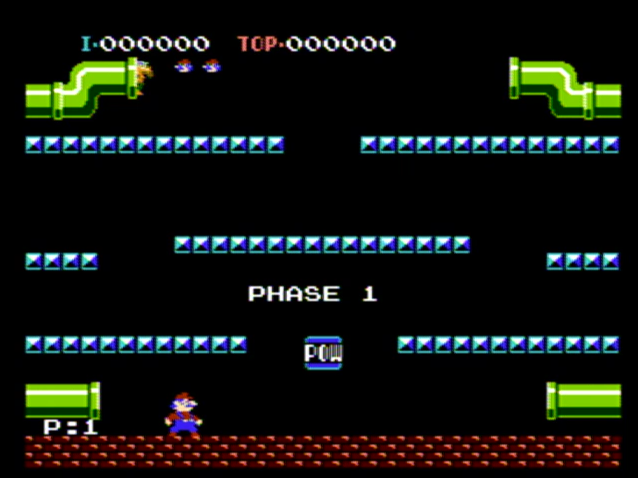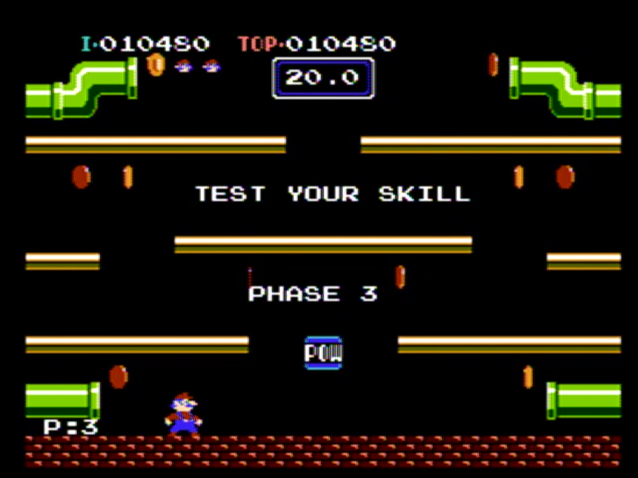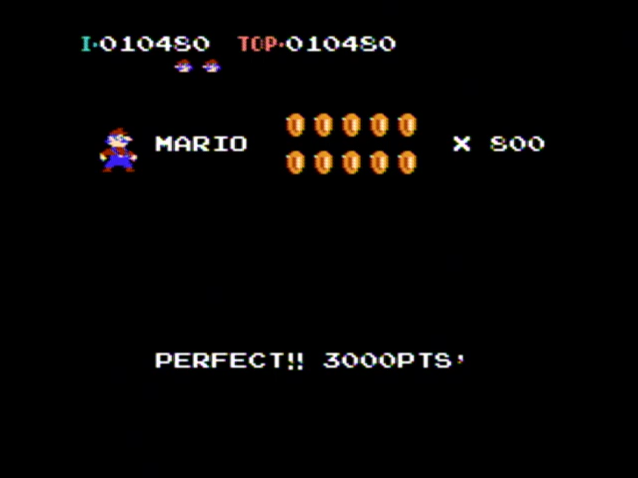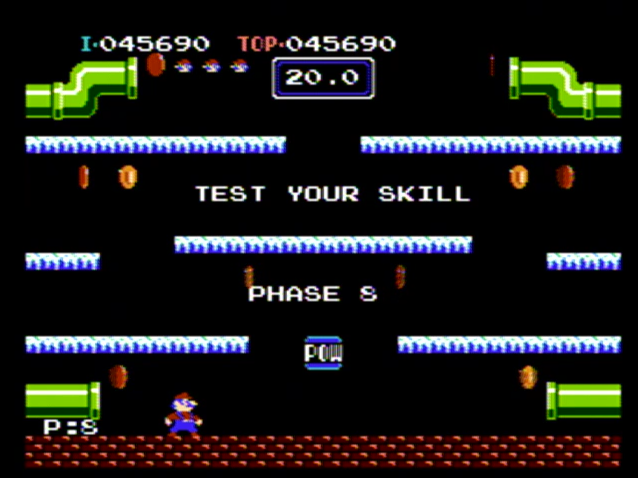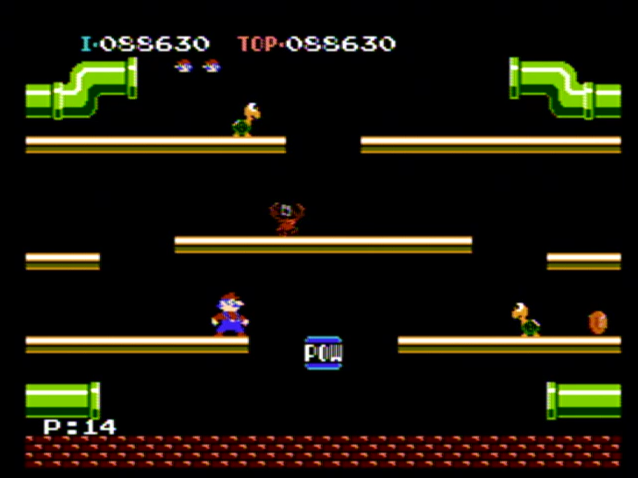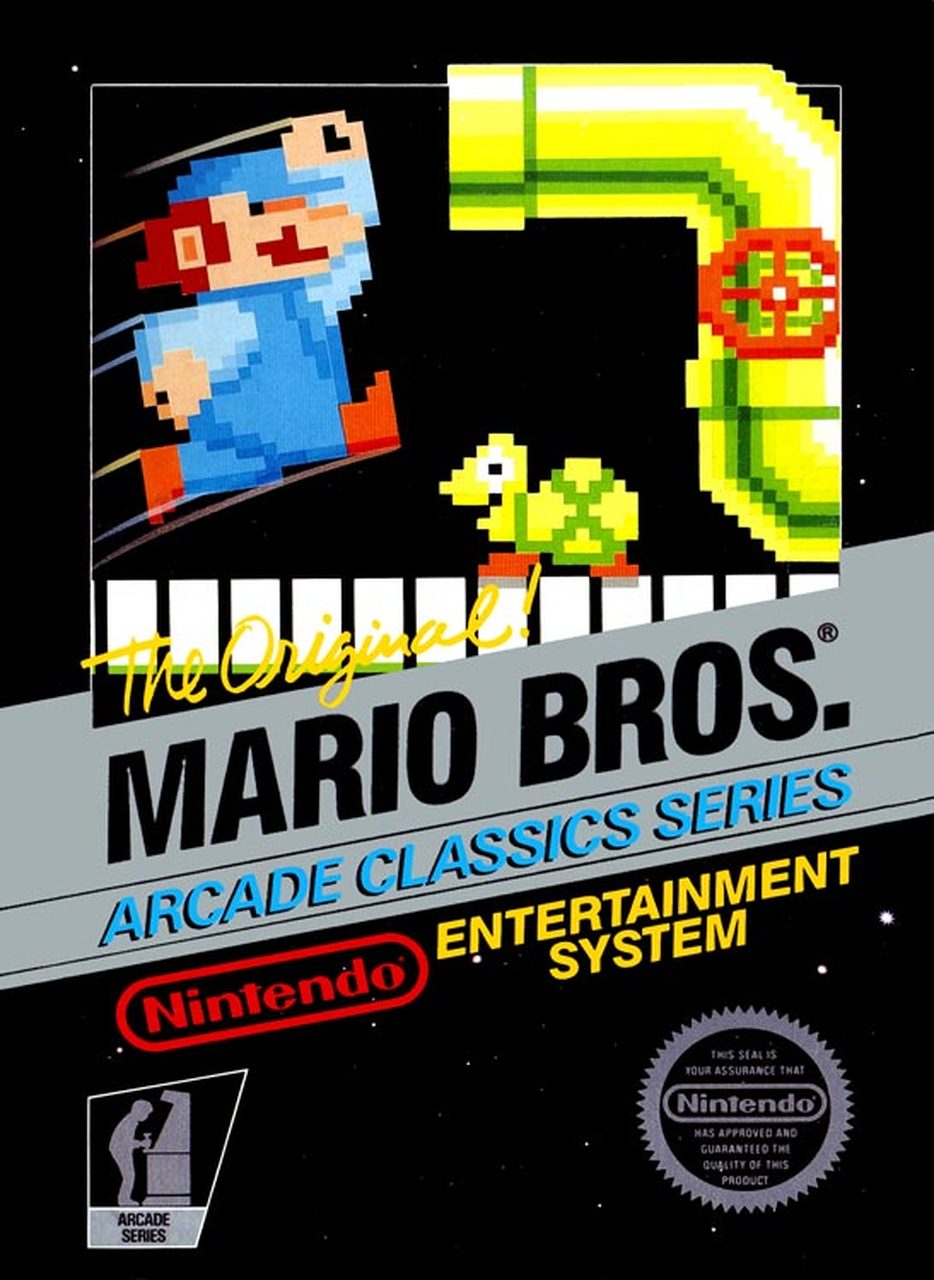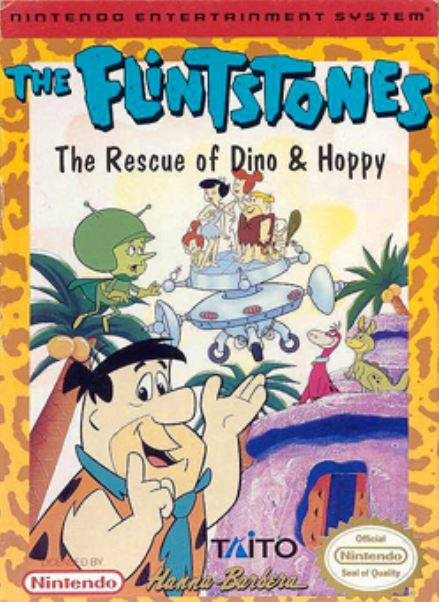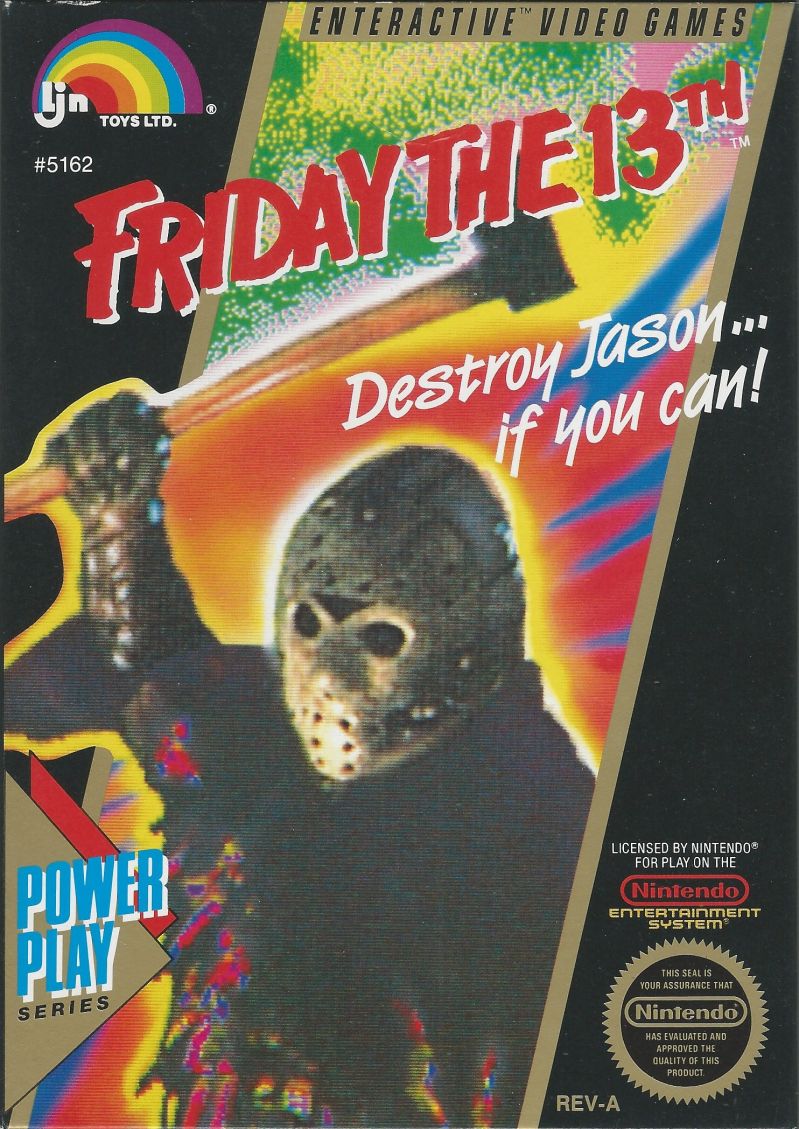Mario Bros. Review
Not to be confused with “Super” Mario Bros. for the same system, Mario Bros. is based on the arcade game. This game was released long before the franchise branched out to other gameplay genres such as 2D side-scrollers. How well does this arcade classic hold up after all these years? Let’s take a look and find out.
The controls aren’t quite what you’d expect from a traditional Mario game. Mario’s movement feels very slippery; any time you try to change the direction you’re moving in, he pivots and slides across the floor. The jump is also somewhat difficult to control. If you’re standing perfectly still, you’ll only jump straight up and can’t control where you land. The controls are somewhat stiff when compared to Super Mario Bros., which was released a few years later. Despite the limited controls, you’re still given plenty of freedom to move around the stage. If you pass through one end of the screen, for instance, you come back out the other side, just like Pac-Man.
The graphics are decent for the time, but the levels lack detail. You only ever see a black background, platforms, red bricks, and green pipes. The platforms occasionally change color in between stages, but the environments don’t have much variety otherwise. Much like the original Donkey Kong, what you see on screen is what you get for the entire level. While the stage layout never changes, the levels get more cluttered and chaotic as the game moves along.
Your objective is simple: eliminate all enemies on the screen. There are three different types of foes that you’ll encounter along the way: turtles that are slow and easy to hit, crabs that move quickly and take two hits before getting knocked down, and fighter flies that move very slowly and jump from side to side. Unlike most Mario games, the enemies can’t be killed by stomping on them. I had to learn that the hard way back when I played the game for the first time. Instead, you have to stand below the platform they’re walking across and hit the roof to knock them down. Once that happens, you walk into them and kick them off the screen. If you wait too long, the enemies can get back up and move twice as fast as before, making it harder to hit them again. The enemies change color either when they’ve been knocked down once before or if they’re the last enemy left standing.
This might be one of the best video game commercials I've seen.
Other hazards will attempt to impede your progress. Icicles, for instance, will kill you if touched. You definitely don’t want to let these things stick around for too long. Once they stop moving, they freeze an entire section of the floor, making Mario’s movements even more slippery than before. Red and green fireballs will spawn periodically to keep you from staying in one place for too long. They appear more frequently on the higher difficulty setting, also known as “Game B” on the title screen.
Thankfully, not every object on the screen is trying to kill you. The “POW” block sits at the bottom of the stage and causes all enemies on the screen to get knocked over when hit. Every so often, a coin will fall out of the pipes, which gives you a few extra points if collected. Every so often, you’ll get a bonus stage where you have to collect all the coins on the screen before time runs out. This further elevates your score and gives you a chance at getting an extra life.
To my knowledge, there is no way to actually “beat” the game; you just keep going until you die. Like many arcade games, the idea is to get a high score, but that doesn’t really mean much on a home console. You’re not getting your name displayed on a leaderboard for all to see at the local arcade, so a high score isn’t as meaningful on an NES. The game has a two-player mode in which Mario and Luigi compete for points, so that’s the only real reason I can think of to have a point system.
This game’s legacy still lives on today. If the controls are too primitive for you, there exists an updated version on the Game Boy Advance that fine-tuned the controls, added more music, and offered more variety in the appearance of the stages. This game is often referenced in other Nintendo titles, including Super Smash Bros. and other Mario games on the GBA. Even though the gameplay is limited and a bit dated by today’s standards, Mario Bros. is still an important part of the franchise’s history and is worth checking out.

